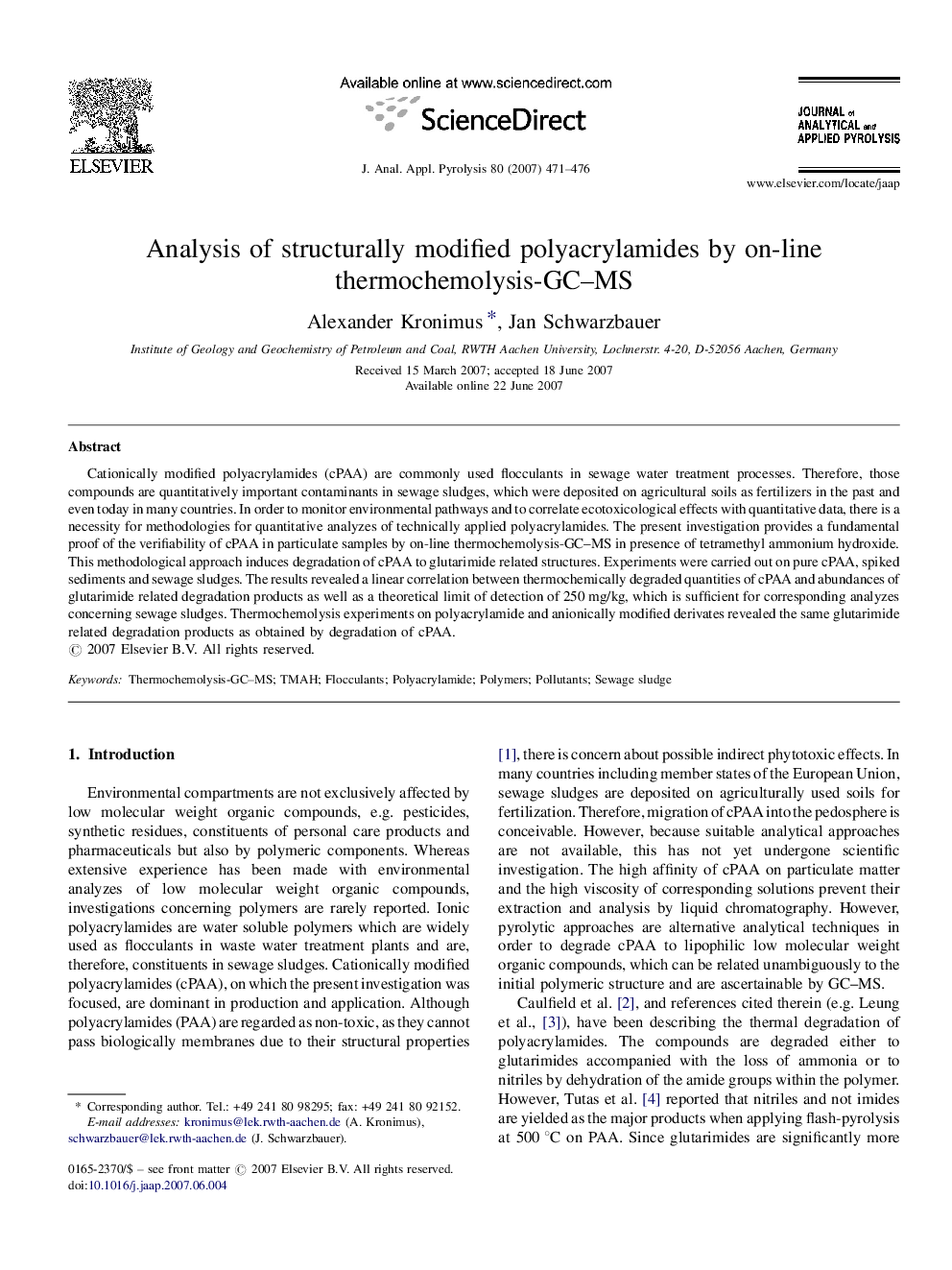| Article ID | Journal | Published Year | Pages | File Type |
|---|---|---|---|---|
| 1197744 | Journal of Analytical and Applied Pyrolysis | 2007 | 6 Pages |
Cationically modified polyacrylamides (cPAA) are commonly used flocculants in sewage water treatment processes. Therefore, those compounds are quantitatively important contaminants in sewage sludges, which were deposited on agricultural soils as fertilizers in the past and even today in many countries. In order to monitor environmental pathways and to correlate ecotoxicological effects with quantitative data, there is a necessity for methodologies for quantitative analyzes of technically applied polyacrylamides. The present investigation provides a fundamental proof of the verifiability of cPAA in particulate samples by on-line thermochemolysis-GC–MS in presence of tetramethyl ammonium hydroxide. This methodological approach induces degradation of cPAA to glutarimide related structures. Experiments were carried out on pure cPAA, spiked sediments and sewage sludges. The results revealed a linear correlation between thermochemically degraded quantities of cPAA and abundances of glutarimide related degradation products as well as a theoretical limit of detection of 250 mg/kg, which is sufficient for corresponding analyzes concerning sewage sludges. Thermochemolysis experiments on polyacrylamide and anionically modified derivates revealed the same glutarimide related degradation products as obtained by degradation of cPAA.
